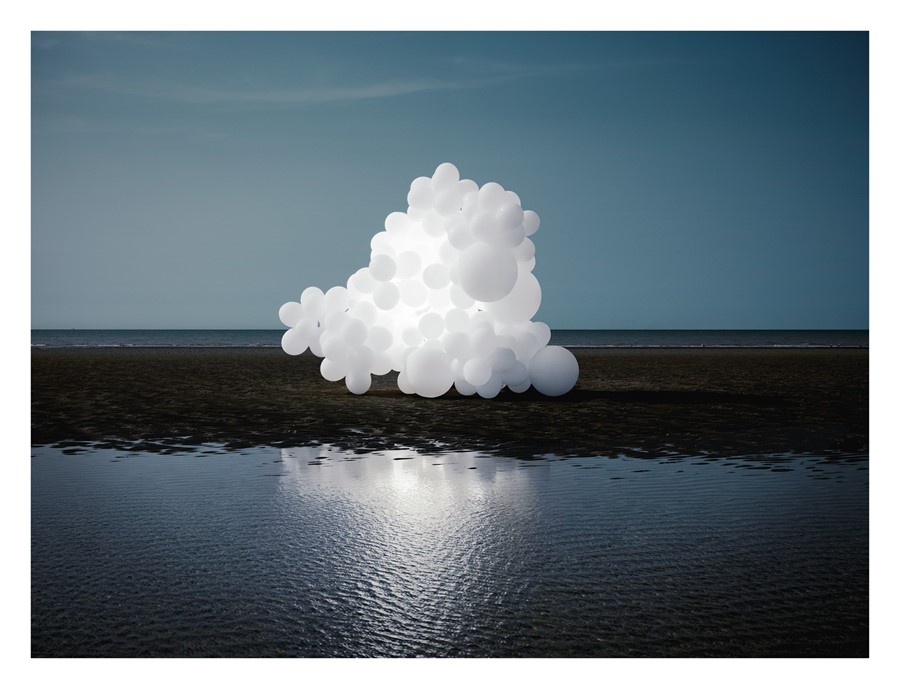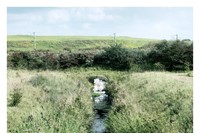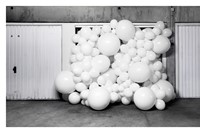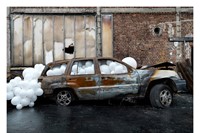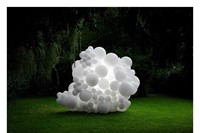As his new exhibition prepares to open in Shanghai, Charles Pétillon talks to AnOther about his monumental ephemeral installations
When Charles Pétillon and I sit down to talk over Skype – a gossamer-thin wifi signal connecting us from Shanghai, where he’s setting up his new exhibition, to London – he’s struggling to come up with a name for his newest installation, a piece he is creating uniquely for the city’s Magda Danysz gallery. It’s understandably a difficult process. “It will be a spiral,” he explains to me in heavily accented English. “I would like to talk about the evolution of Chinese society – but it’s not only for the Chinese, because the spiral represents life for many many people. It’s an innately political piece,” he tells me, making references to DNA’s double helix, and to representations of government policy and the like, but China’s quietly oppressive environment makes it important that it not be too political. As Ai Weiwei’s well-publicised struggle has made only too clear, politically engaged artists are not welcomed with open arms here.
As for Pétillon, this is his first visit to China, and it has been an eye-opening experience. “I’ve heard different things, from the media, from people, etcetera, so I was maybe a bit critical about the country and its society. When you’re here, though, you have a different perception. It’s complicated.” Fortunately, the malleability of his artworks – awe-inspiring, larger-than-life installations made up of hundreds or thousands of white balloons of varying sizes, manipulated so as to take on a life all of their own – means that his viewer can largely project their own ideas upon them. “I talk about many things in my work,” he says. “Politics, I don’t like so much to talk about, because I ask questions but I don’t have any solutions. I don’t feel able to talk about it.” Climate change, “nature, pollution, etcetera”, on the other hand, has become a recurring motif: from pieces distilling invisible CO2 gas into something all the more tangible, balloons spilling out through an open garage, to illuminated clouds of rubber hanging suspended above a forest floor. “Climate change – I talk about it,” he explains. “It is one of the most important topics in our life for everybody on this earth, so we can’t escape it. I would like to do something about it, but I don’t want to be aggressive with my pictures. They are a way to ask questions.”
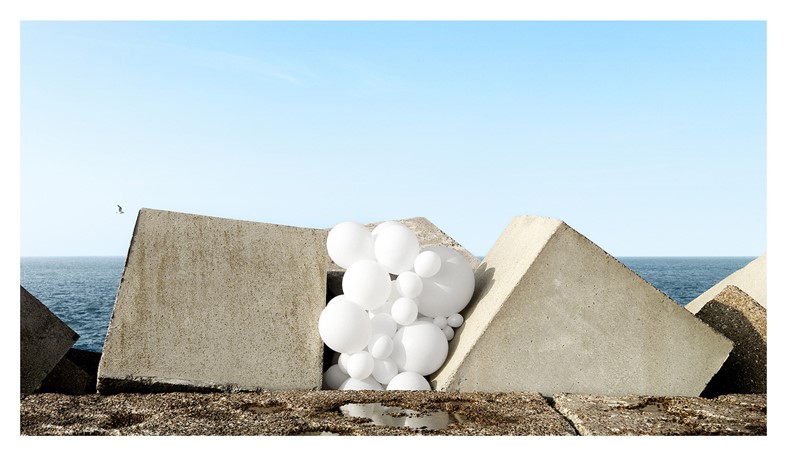
Taking inspiration from the land art movement, Pétillon’s work aims, above all else, to change the way people approach a space. Last year he completed his most ambitious work to date, covering the ceiling of London’s historic Covent Garden Market Building with an all-encompassing installation made up of 100,000 white balloons, entitled Heartbeat. “It was the most important public artwork I’ve done, because it was so so so huge,” he explains, “but the meaning is soft in this installation. In some of my artworks the meaning is more strong, more powerful.” The scale of the project is all the more impressive for the fact that Pétillon only began showing his works publicly last year, in 2015. He has led a successful career as a still life photographer working for magazines and advertising for years, experimenting with set design alongside his commercial practice, but he didn’t initially recognise the artistic potential of the pieces he was making. “For a few years I made those pictures just for me, just for my pleasure, showing them sometimes to my friends,” he says. “An art director friend told me ‘maybe you should make an exhibition, because if somebody comes up with pictures like these, you’ll be disappointed’. I thought, ‘yes, maybe you’re right’. So I decided to work more on this subject, with the balloons, and a few years later I had my first exhibition, in France.”
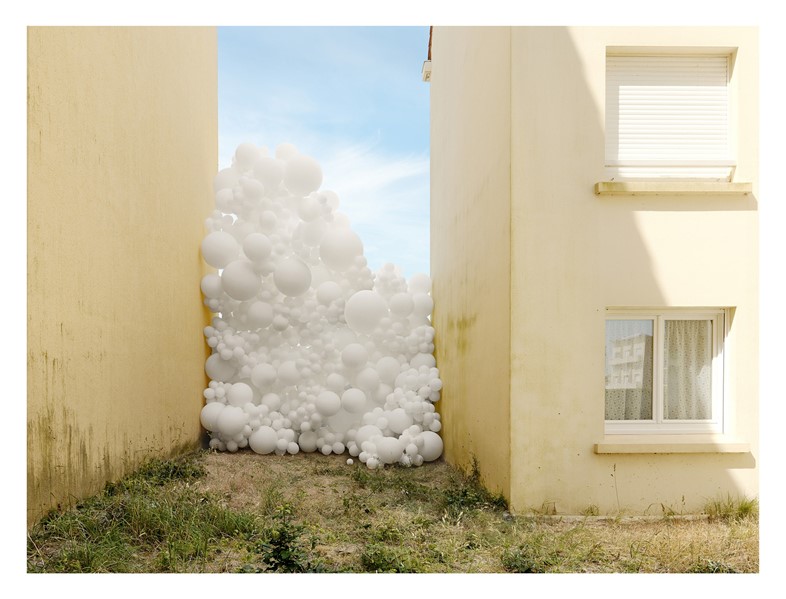
The practice itself presents many challenges: sometimes even searching for a venue can bring up so much red tape that ultimately the idea behind it has to be scrapped. “For example, I would like to make a picture in an airport, and I need authorisation,” Pétillon says, “but they don’t want to allow me to make these pictures, because of the troubles with terrorism. Sometimes it takes me three years to make the pictures, to find the right place, the right subject.” What’s more, the frailty of his balloon structures means that he can generally only create the pieces from May until October time, due to the weather, and he pays for every element of the expensive process himself.
At the Magda Danysz gallery, Pétillon presents an ongoing series of these photographic works, entitled INVASIONS – oneiric, ephemeral sculptures which capture the imagination of their viewers almost as powerfully when preserved on paper as they do when viewed in real life. As for titles for his newest site-specific piece, due to be erected in the gallery space in time for its opening? He’s accepting answers on a postcard.
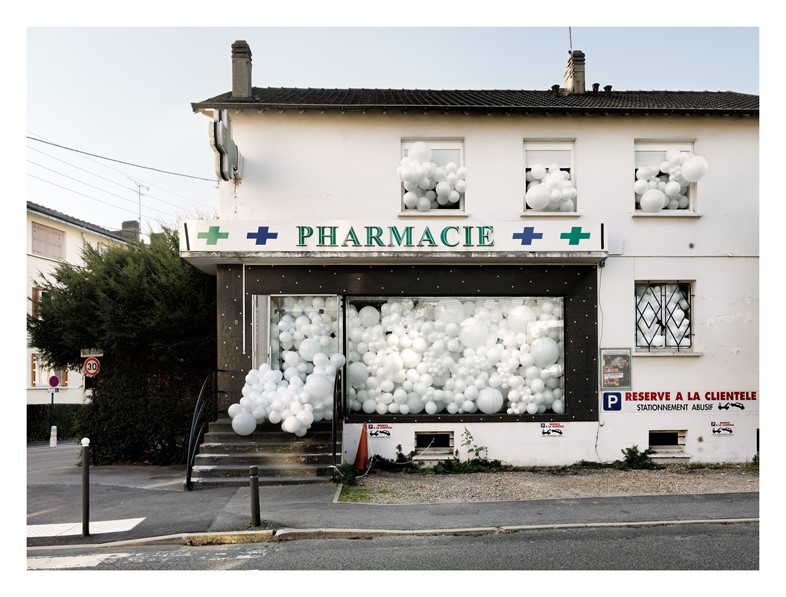
Charles Pétillon, INVASIONS, runs from May 14 until June 20 at Magda Danysz gallery, Shanghai.
